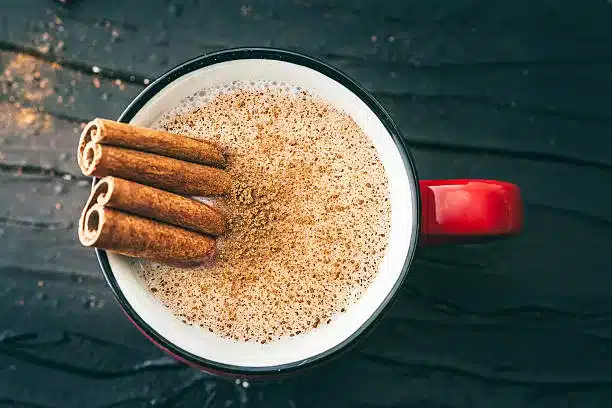Ah, coffee – the liquid gold that wakes us up every morning. But let’s talk about that pesky little thing called acidity that can turn our beloved cup from a dream into, well, something less dreamy. In this guide, we’ll dive into the art of “How to Reduce Acidity in Coffee” and make your mornings brighter and less… tangy.
Understanding Coffee Acidity

What is Acidity in Coffee?
Have you ever sipped a coffee and felt like you’ve just bitten into a Granny Smith apple? That’s acidity doing its thing. It’s not just there to mess with you; it plays a big role in the overall flavor of your cup. Coffee contains various acids like chlorogenic, citric, and malic – think of them as the zesty band members of your coffee concert.
Factors Influencing Acidity
Now, the birthplace of your beans matters. Beans from Ethiopia might remind you of a citrus fiesta, while Indonesian beans are more like a smooth jazz night. Also, the coffee family drama: Arabica beans are like the sophisticated cousin with nuanced flavors, and Robusta is the bold, strong family member. And processing methods? They’re like different cooking styles – some highlight acidity, while others mellow it down.
related article -choosing the best mild coffee beans
Hey there, fellow coffee enthusiasts! If you’re anything like me, the quest for the perfect cup of joe is a never-ending journey. Today, I want to dive into the soothing world of the best mild coffee beans, a realm where subtlety reigns and flavor nuances whisper their tales. Ever found yourself wondering what exactly makes… Read More>>

The Impact of Roasting on Acidity

Roasting Levels and Acidity
Think of coffee roasting as a DJ’s mixing board where the roast level dials up or down the acidity in your cup. Here’s how it works:
- Light Roasts: These are the extroverts of the coffee world. Light roasting keeps the beans’ original, zesty flavors front and center. It’s like turning the volume up on the acidity. If your morning cup sings with fruity or floral notes, thank a light roast. But remember, if you’re pondering how to reduce acidity in coffee, these might not be your go-to.
- Medium Roasts: Here’s where balance enters the chat. Medium roasts bring a harmony between the beans’ innate flavors and the caramelization from roasting. You get a mellower acidity, like a well-tuned guitar – present but not overpowering.
- Dark Roasts: The strong, silent type of the coffee world. Dark roasting is like putting acidity on mute. It emphasizes richer, deeper flavors over zingy acidity. If your goal is to reduce acidity in coffee, dark roasts are your faithful allies. They’re like a quiet, cozy library corner, offering a smooth, tranquil coffee experience.
So, when you’re on your quest of ‘How to Reduce Acidity in Coffee,’ think of your roast levels as your secret weapon. Choose wisely, and enjoy the journey to a smoother cup!
Related Article – Discover the Shocking Health Benefits of Cinnamon Coffee: #5 Will Shock You!
Introduction To The Health Benefits Of Cinnamon Coffee Quick Overview of the Fusion of Coffee and Cinnamon Coffee and cinnamon, individually, have been enjoyed for millennia, each boasting a rich history and a plethora of uses. But, when combined, they create a harmonious blend that not only delights the palate but also offers a variety… Read More>>

Selecting the Right Roast
Choosing the right roast can be a game-changer when it comes to how to reduce acidity in coffee. If you want to wrangle that acid beast, here’s a little guide:
- Medium Roasts: Think of them as the diplomats in the world of coffee. These roasts gently coax the beans into revealing a balanced profile, where the natural acidity doesn’t overpower. It’s like finding the perfect middle ground in a heated debate.
- Flavor Profile: Expect a symphony of mild fruitiness with a hint of cozy roastiness.
- Best For: Those who want a touch of acidity without the tang.
- Dark Roasts: The superheroes in the saga of reducing acidity in coffee. Dark roasts go the extra mile, roasting away most of the acidity and bringing forward a bolder, richer flavor.
- Flavor Profile: Get ready for a robust, earthy experience with whispers of chocolate or caramel, minus the acid bite.
- Best For: Coffee lovers who say ‘no thank you’ to acidity and ‘yes please’ to a smoother, richer cup.
Remember, in the quest to reduce acidity in coffee, the roast level is your trusty sidekick. Choose medium or dark roasts and transform your coffee experience from a rollercoaster ride to a smooth sail.
Brewing Techniques to Reduce Acidity

Choosing the Right Brewing Method
Brewing is like the coffee’s final audition on its way to stardom, and it plays a crucial role in how to reduce acidity in coffee. Let’s spotlight a couple of methods:
- Cold Brew: The Zen guru of the coffee world. By brewing coffee grounds in cold water over a prolonged period (usually 12-24 hours), cold brew takes the low road on acidity. It’s like a chill meditation session for your coffee beans, resulting in a smooth, almost sweet cup. Perfect for those who want to keep acidity on the down-low.
- Espresso: This method is the rockstar of the coffee scene, high on energy and, you guessed it, acidity. The quick, high-pressure brewing extracts intense flavors and acids, making a vibrant and zippy cup. It’s an acid trip in the world of coffee – thrilling, but not for the faint of heart.
In your quest to reduce acidity in coffee, consider your brewing method your trusty compass. Opt for cold brew for the most mellow vibes, or venture into the bold world of espresso if you can handle a bit more zing.
related article – master making a good cuppa at home
Today, we will show you how to make a good cup of coffee at home that will rival any coffee shop brew. Are you tired of mediocre coffee that just doesn’t hit the spot? Are you tired of shelling out your hard-earned cash for a cup of Joe that leaves you wanting more? Well, fear … Read More >>

Brewing Parameters and Acidity
Tweaking your brewing parameters is like being a DJ for your coffee – a little adjustment here and there, and you can dramatically change the tune of acidity. Let’s break down these dials:
- Water Temperature:
- The Hotter, the Zingier: Just like cranking up the heat in a debate amps up the intensity, hotter water tends to extract more acidity from your coffee beans. If you’re on a mission of how to reduce acidity in coffee, think of cooler water as your cool-headed mediator.
- The Sweet Spot: Aim for a slightly cooler brewing temperature than usual. This can mean the difference between a coffee that’s harmoniously smooth and one that’s an acid rock concert.
- Grind Size and Brewing Time:
- Coarser Grinds: They’re like laid-back beach tunes – relaxed and easy-going. A coarser grind doesn’t surrender as much acidity into your cup, keeping things mellow.
- Brew Time: Short and sweet is the mantra here. A quicker brew time prevents the coffee from releasing all its acidic notes. Think of it like a short, pleasant chat versus a long, heated argument.
Remember, playing around with water temperature and grind size/time is key in your journey to reduce acidity in coffee. Each small tweak is a step towards a cup that’s more like a smooth jazz track and less like a heavy metal solo.
The Water Factor

The Role of Water in Coffee Brewing
Water, the unsung hero in the quest of how to reduce acidity in coffee, deserves its moment in the spotlight. Here’s why the type of water you use is so crucial:
- Water Quality Matters: Think of water as the stage where your coffee beans perform. Just like a good stage can enhance a performance, the right water can elevate your coffee experience. If your water is a diva (read: too hard or too soft), it can throw the whole show off balance.
- Soft and Slightly Mineralized: The ideal water for brewing coffee is like a supportive friend – not too overwhelming, not too underwhelming. Soft water with a hint of minerals can help extract the coffee flavors just right, reducing the harshness of acidity.
- Filtered Water for the Win: Consider using filtered water to remove any impurities that might interfere with the delicate balance of flavors in your coffee. This is especially important if you’re looking to reduce acidity in coffee. It’s like giving your coffee a clean, clutter-free stage to shine on.
So, when brewing your next cup, remember that water is more than just a medium – it’s a crucial ingredient that can make or break your quest to reduce the acidity in your coffee. Treat it with respect, and it will return the favor with a smooth, harmonious cup. Cheers to good water and great coffee!
DIY Water Recipes
Why not play mad scientist and create your own water recipe? A dash of this, a pinch of that, and you might just brew the silkiest cup in town.
Additional Tips for a Smoother Cup

Coffee Bean Blends
When it comes to how to reduce acidity in coffee, think of yourself as a coffee DJ, mixing and matching beans to create the perfect blend. Here’s how to spin the decks for a low-acidity hit:
- Understanding Bean Profiles: Just like a DJ knows their tracks, understand your beans. Arabica beans generally have a higher acidity than Robusta, so a blend favoring Robusta can tone down the tang.
- Regional Mix: Beans from different regions bring their unique notes to the party. Blend a bright, acidic African bean with a smoother, low-acid South American bean. It’s like mixing a zesty salsa song with a smooth jazz tune – the result can be a harmonious melody with reduced acidity.
- Roast Varieties: Combine light and dark roasts. The light roast brings the lively flavors, while the dark roast mellows out the acidity. It’s all about finding that sweet spot where the flavors sing in harmony, without the high notes of acidity stealing the show.
Experimenting with bean blends is a fun and effective way to tailor your coffee’s acidity. Just like a DJ feels the crowd, feel your coffee. Play around until you find that perfect blend that hits all the right notes for a less acidic, more enjoyable cup.
related article – Koa coffee, bold & exciting in a mug!
If you’re looking for something new and exciting in your morning coffee routine, look no further than Koa Coffee. This Hawaiian-based company roasts some of the most flavorful beans around, resulting in a bold, intense cup… Read More >>

Home Remedies and Additives
Believe it or not, your kitchen holds secret weapons in the quest of how to reduce acidity in coffee. Let’s explore these unexpected heroes:
- Natural Neutralizers:
- Baking Soda: Yes, you read that right. A tiny pinch of baking soda in your coffee can neutralize acidity without altering the flavor too much. It’s like having a mediator in a heated debate, calming things down smoothly.
- Eggshells: Old-school but effective. The alkaline nature of eggshells can balance out the acidity in your brew. Just clean them thoroughly and add a piece to your coffee grounds before brewing. It’s like a vintage charm to mellow down the tang.
- Milk and Creamers:
- Adding milk or creamers to your coffee works wonders. They act like a buffer against acidity, giving your coffee a smooth, creamy texture. It’s akin to wrapping your coffee in a soft, velvety blanket, tempering the sharp edges of acidity.
These simple yet effective home remedies can be game-changers in reducing acidity in coffee. Next time your coffee seems too sharp, remember these tricks up your sleeve. A smoother cup awaits!
Advanced Techniques for Coffee Enthusiasts

Experimenting with Post-Roast Blending
For those diving deeper into how to reduce acidity in coffee, post-roast blending is like being the maestro of your coffee orchestra. It’s an art of combining different roast profiles to create a harmonious cup. Here’s how you can conduct your coffee symphony:
- Blend Different Roasts: By mixing beans of varying roasts, you tailor the flavor and, importantly, the acidity. Pair a light roast, high in acidity, with a dark roast, which is lower in acidity. It’s like blending a bright pop song with a deep blues track – you control the overall tone.
- Taste and Adjust: Start with equal parts of each roast and then adjust according to your taste. Perhaps a bit more dark roast to mellow out the acidity or a touch of light roast for complexity. Each adjustment tweaks the acidity level, getting you closer to your ideal cup.
- Keep Notes: Like any good experiment, tracking your blends and their effects on acidity will guide you to your perfect balance.
This method allows coffee enthusiasts to play an active role in their coffee’s flavor profile, especially in reducing acidity. So, go ahead, be the DJ of your coffee world and mix your way to a smoother, less acidic cup.
Advanced Brewing Gadgets
In the modern world of coffee brewing, technology comes to the rescue, especially when it’s about how to reduce acidity in coffee. Here’s a look at some advanced gadgets that can be your allies in this quest:
- Precision Brewers: These are the smartphones of coffee machines. With settings to adjust brewing temperature, time, and even water flow, precision brewers give you unparalleled control over the brewing process. This means you can fine-tune the conditions to extract less acidity from your beans, ensuring a smoother cup every time.
- Water Filters: The quality of water can dramatically affect the acidity in your coffee. Advanced water filters remove unwanted minerals and impurities, providing a clean slate for brewing. This means the natural flavors of the coffee can shine through, without being overshadowed by high acidity levels.
- pH Meters: For the scientifically inclined, a pH meter can be a fascinating tool. By measuring the acidity level of your brew, you can make precise adjustments to your brewing process for the perfect balance.
Embracing these tech tools can elevate your coffee game and help you master the art of reducing acidity. So, techies and coffee lovers, unite and brew on!
How To Reduce Acidity In Coffee FAQ Section
When diving into the world of coffee, especially when trying to reduce its acidity, questions abound. It’s natural to seek answers that make our coffee experience more enjoyable and suited to our tastes. Below are some commonly asked questions related to reducing acidity in coffee, providing insights for those seeking a smoother cup.
How do you Stop Acid After Drinking Coffee?
If you experience discomfort from acidity after drinking coffee, there are several methods to mitigate this:u003cbru003eu003cstrongu003eDilute the Coffee: u003c/strongu003eAdding more water or milk can reduce the concentration of acid.u003cbru003eu003cstrongu003eEat Something:u003c/strongu003e Consuming food before or while drinking coffee can help buffer the acid.u003cbru003eu003cstrongu003eChoose Low-Acidic Beans:u003c/strongu003e Opt for beans that are naturally low in acid, such as those from Brazil or Sumatra.u003cbru003eu003cstrongu003eCold Brew: u003c/strongu003eSince cold brew coffee extracts less acidity, it might be a gentler option.
What Happens if Coffee is Too Acidic?
Overly acidic coffee can lead to several issues:u003cbru003eu003cstrongu003eTaste: u003c/strongu003eHigh acidity can overshadow other flavors in the coffee, making it taste sour or sharp.u003cbru003eu003cstrongu003eDigestive Discomfort: u003c/strongu003eSome people may experience stomach aches or acid reflux from highly acidic coffee.u003cbru003eu003cstrongu003eDental Health:u003c/strongu003e Excessive acid can contribute to enamel erosion on teeth over time.u003cbru003eu003cstrongu003eBalancing Flavors:u003c/strongu003e If coffee is too acidic, it can be challenging to find the right balance of flavors, affecting the overall enjoyment of the drink.
Is Decaf Coffee Less Acidic?
Decaf coffee is often perceived to be less acidic, but the truth is more nuanced:u003cbru003eu003cstrongu003eAcid Content: u003c/strongu003eThe process of decaffeination doesn’t significantly alter the acidity levels in the beans.u003cbru003eu003cstrongu003eBean Type and Roast:u003c/strongu003e The inherent acidity of decaf coffee depends more on the bean’s origin and roast level.u003cbru003eu003cstrongu003ePerception:u003c/strongu003e Some people may find decaf coffee gentler on the stomach, possibly due to the absence of caffeine, which can stimulate acid production in the stomach.u003cbru003eu003cstrongu003eIndividual Variability:u003c/strongu003e As with regular coffee, the perceived acidity in decaf will vary based on individual taste and sensitivity.
By understanding these aspects of coffee acidity, you can make informed choices to enjoy your coffee just the way you like it.
Last Sip
There you have it, coffee comrades – your roadmap to “How to Reduce Acidity in Coffee.” Experiment, have fun, and remember, coffee is a journey, not just a destination.
I hope this guide helps you conquer the coffee acidity dragon and brew cups that make your taste buds sing! Remember, coffee is personal, and the best cup is the one that brings a smile to your face. Happy brewing!
In a family of coffee addicts, Mark started to appreciate the drink fairly late – around 35 years old.
His love for java began when he wrote articles on it and bought his first machine after which everything else just fell into place; there are now five machines in our home!
We start every day with an early morning cuppa coffee because what could better help set your mind right than some freshly brewed hot Coffee?
When Marks not writing or thinking about coffee, he can be found sipping on a cup of black gold at one of his favorite local joints.




